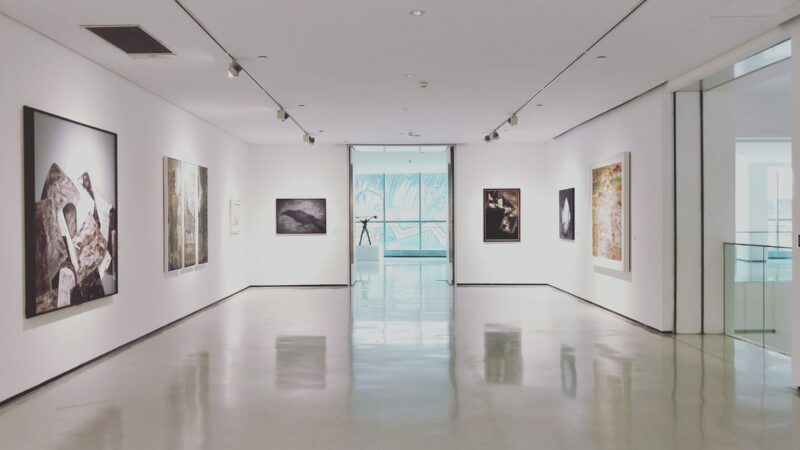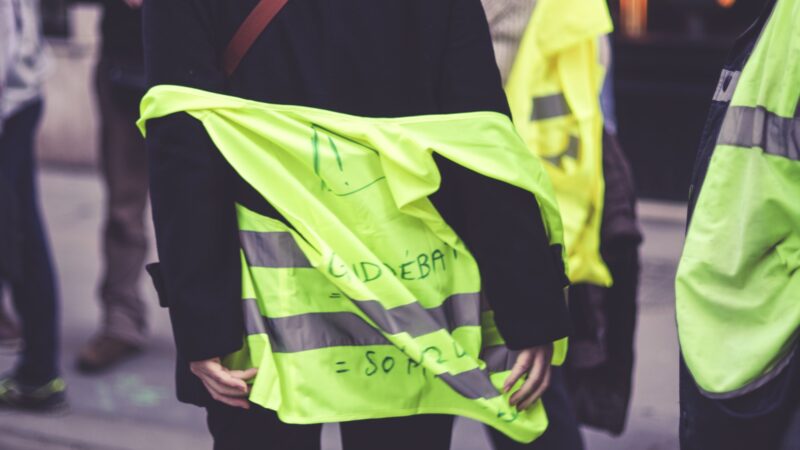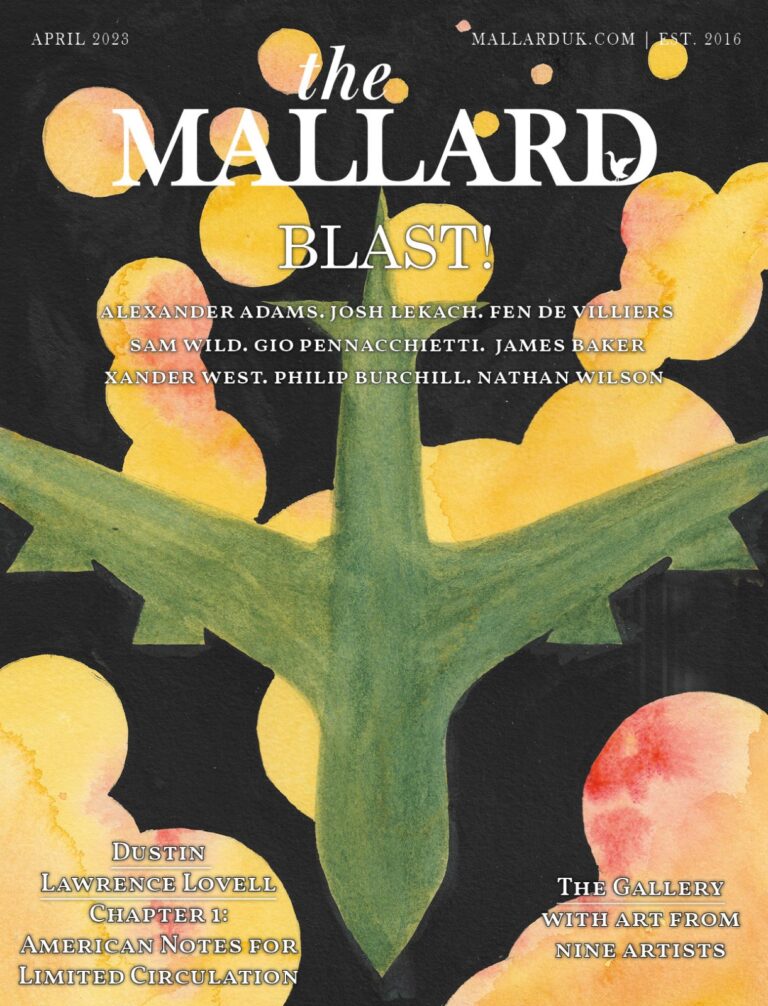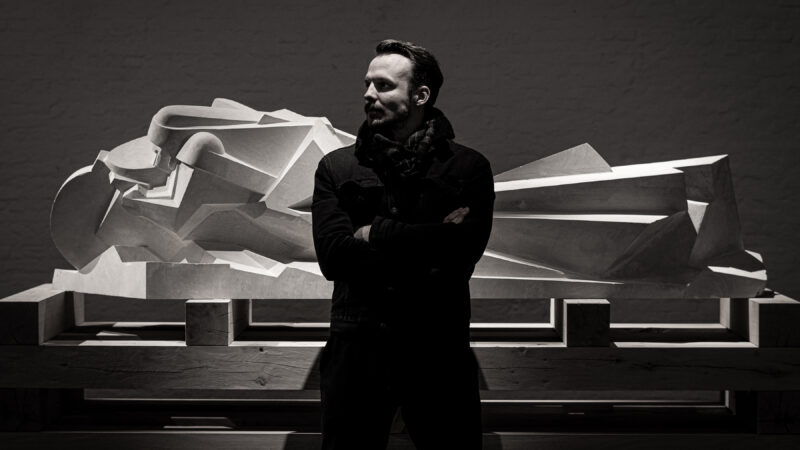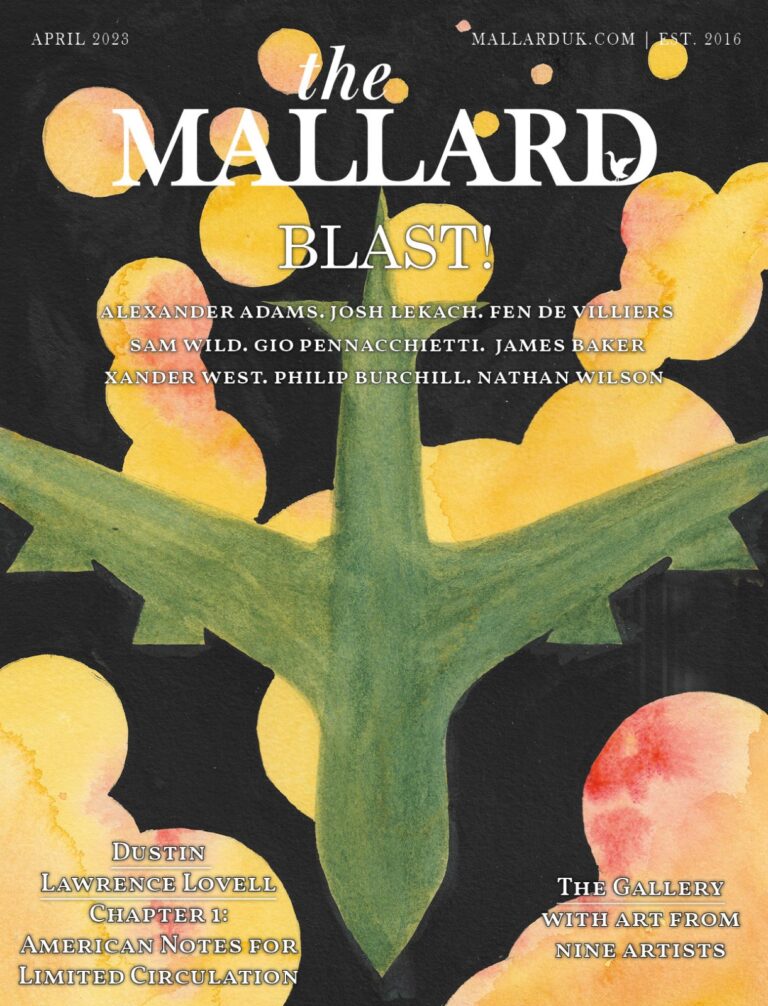On Conservatism and Art
A few weeks ago, another tweet claiming that it was impossible for conservatives to make art made the rounds of Twitter. Like too many in the mainstream culture, its sender erroneously assumed that because art inherently involves edgy innovation, and since conservatives categorically hate and/or fear both extremes and change, art must be the obvious property of the left. The thread received enough attention that I don’t need to invite more here. The Mallard hosted a Space on the topic—not necessarily on whether its message had merit (quote threads were rife with examples contradicting it, from Dostoevsky to Dali to Stevie Ray Vaughan), but rather to discuss the question of how conservatives could most effectively make art.
Of course, among other topics we discussed the relationship between art and politics. A point made by many was the fact that, when discussing art and conservatism one should at least attempt to be clear about their terms. Furthermore, as mentioned in the conversation by Jake Scott, one must differentiate between political conservatism and metaphysical conservatism; the confusion of the two has, as the above stereotype shows, led to much confusion on the subject of conservatism and art that, so far as I can, I will attempt to nuance here.
A refrain one hears, usually from activists on the left, is that all art is political. Such assertions are often met with frustration, generally from convervatives but also from people not explicitly on the right but who just want to be left alone when it comes to politics (and who, for such a response, are subsequently branded as right-wing by those who interpret all of life through an unconditional, against-if-not-actively-for ideology). However, the former are not wrong; all art can be interpreted as political—because all art is metaphysical.
As I’ve mentioned in previous articles, art is, among other things, a concretization of abstract values. When one looks at a painting, listens to a song, takes in a sculpture, walks through a building, or reads through a novel, one is engaging with the values that the artist has given a local habitation and a name (as always, Shakespeare said it best—MND V.1); this necessarily involves, though it need not be fully bound to, the artist’s metaphysical worldview.
Consider the two literary schools that dominated the nineteenth century and that can generally be placed within Western culture’s pendulum-like sway between the Platonic and Aristotelian: Romanticism and Naturalism. A Romantic whose work assumes that there are things higher than the material world that give this life an infinite meaning will create very different art from a Naturalist who believes the material world is all that exists and that any attempt to say differently is an artifice that will unintentionally or cynically mislead people into accepting suffering as a value. Nothing in these examples is overtly political, but one can see (indeed, we’ve had over a century of seeing) the different politics that would come from each view. This is because politics, as an expansion upon the more fundamental realm of ethics, begins with metaphysical premises from which the rest flow. Different directional degrees will lead maritime navigators to very different locations; how much more will different primary assumptions about the nature of reality and humans’ place in it?
Let’s look at an example from an author who was cited in that thread as a conservative: Dostoevsky. Rather than counter the rising atheist-socialist egotism of mid-nineteenth-century Russia with a political textbook (which, granted, would have been banned under the Tsar’s censors, who eschewed all explicitly political works—hence why the Russian novel had to take on so many roles), Dostoevsky depicts and undermines the burgeoning philosophy in the character of Crime and Punishment’s Rodion Raskalnikov.
However, though the ideas in debate had (and are still having) political effects, Dostoevsky is not merely speaking politics in Crime and Punishment. He understood that politics was a function of one’s primary assumptions about reality—about one’s metaphysics—and their effects on one’s individual psychology. He also recognized, as Raskalnikov’s unconventional bildung shows, that one’s stated politics may actually conflict with the metaphysics underlying their beliefs. Hence, for all Rodion’s stated atheistic egotism, he finds himself preventing a woman from committing suicide, giving all his spare cash to those with less than he, and being fascinated with the downtrodden but resilient (because Christlike) Sonia.
In Crime and Punishment and his other masterpieces, Dostoevsky juxtaposes the new generation’s radical ideas not against other ideas (i.e. on the radicals’ terms) but against the background of the broader Orthodox-Christian Russian psyche. Raskalnikov’s working out of the contradiction between his would-be Napoleon complex and his subconscious worldview (if not the fabric of reality at large—Dostoevsky rarely simplifies the distinction between the two) mimics the author’s own similar progression not only from a socialistic politic to one more consistent with his deeper Orthodox convictions but, in his view, one from madness to sanity.
While to read Dostoevsky solely through a political lens is to not read him at all, his writing does point to the inherent relationship between an artist and the politics of his or her historical context. The norms, laws, and cultural debates of a given generation are interconnected with the art then produced, which can reinforce, undermine, or, in the case of most pre-2010s consumer art, quite simply inhabit them (which, true to form, the aforementioned leftist activist would accuse of being a complacent and complicit reinforcement).
However, as this political layer is often based in the times, it usually passes away with them. In the coming Christmas season, few people will read A Christmas Carol with Social Darwinism in mind, though Dickens was, in part, critiquing that contemporaneous viewpoint in Ebeneezer Scrooge. Perhaps works like Dickens’s Carol were necessary to ensure Social Darwinism did not succeed—that is, perhaps their politics served the purpose intended by their authors. Nonetheless, today A Christmas Carol is virtually useless, politically (at least, for Dickens’s immediate polemical purposes), which is the beginning of a work’s infinite usefulness as art. What is left is the more general story that, for all intents and purposes, made modern Christmas. Contrary to what politivangelicals and literature majors who read through a new historicist lens (*raises hand*) might try to maintain, this is not a lessening but an enriching; it is the separation of the transient from the enduring—of the metaphysical from the physical.
One implication of this view of art as concretized metaphysics, and one which was mentioned in our Space conversation, is that not all art that labels itself “art” qualifies as art. If the explanation of a piece contains more discernible meaning (i.e. is bigger) than the piece itself—that is, if no values have been concretized so as to be at least generally recognizable—then, sorry, it’s not art (or if it is, it’s not concretizing the values its creator thinks it is). Often the makers of such “art” believe the paramount aspect of a piece must be its radical message—the more disruptive and cryptic, the better; this conveniently offers the maker a pretext to skip out on, if not directly subvert, style and aesthetic skill, to say nothing of selectivity. It goes without saying that this is a major part of the oft-lamented degradation of aesthetics in Western culture, from “high art,” to architecture, to animation. Why devote rigor to style and skill when the point is to signal that one aligns with the correct message?
By the way, this merits a general exhortation: if you don’t like a piece of art (a building, a sculpture, a Netflix series, etc), it might not be because you, rube that you are, have no taste or understanding; it might be because it’s simply a pile of shit—which, it bears mentioning, has been tried to be passed off as art. You are under no obligation to concede the inferiority complex such pieces try to sell you in their gnostic snake oil. Because the point of art is to communicate abstract human values, one does not need a degree in art, nor in philosophy, to understand and enjoy good art. Indeed, contrary to the elitism assumed in modern art taste, it may be the mark of good art that the average person can understand and enjoy it without too much explanation; such a work will have fulfilled art’s purpose of bodying forth the forms of things unknown but which are nonetheless universal.
The unintentional defaulting or the intentional subverting of the role of aesthetics in art by the modern and postmodern culture unwittingly reveals a possible door for conservatives who wish to make art. Rather than playing into the stereotype by simply making reactionary art with explicitly opposite meanings, “conservative art” (or, more preferably, conservatives who simply want to make good art) must begin with a return to aesthetic rigor. Just as the early church’s response to heresies was not to accept the premises of the heresies’ mind-body split but, rather, to restore the body-mind-spirit unity depicted in the Gospel and the Trinity, so the current response to artistic heresies—which involve a similar, if not the very same, split—is to reunite the physical and metaphysical.
We must not ignore the messages of our art, but we should allow them to follow the literally more immediate role of the aesthetic experience. Indeed, we should seek to develop enough skill in conveying abstract themes and ideas through our medium such that little explanation is necessary. As conservatives, especially, we do not need to maneuver things so our audience takes away a certain message. Either the values we are trying to capture will speak for themselves, or we will learn that we need more practice. Above all, unless knowingly engaging in polemics, we should not (or at least try not to) approach art as a sermon. Doing so runs the risk of proving too much, besides turning off audiences who have probably had enough messaging and rhetoric. Instead, use your ethos, pathos, and logos to present their corresponding virtues of Goodness, Beauty, and Truth, and let the aesthetic experience stand as the message. As Jake Scott recently tweeted, underscoring his January article cited above, when making art, forget politics—seek to create heritage.
As always, it’s the conservative’s task to take his or her advice first. While I do currently have a polemical novel in pre-publication process with a clear message against the canceling in academia of Shakespeare and the tradition he represents, in A California Kid in King Henry’s Court, my serial novel for The Mallard’s print magazine, I have tried to focus solely on the aesthetic experience of the story.
The title is, of course, a throwback to A Connecticut Yankee in King Arthur’s Court, Mark Twain’s comedy of an American who, having been knocked on his head in a factory, awakens in Arthurian England and subsequently seeks to industrialize the chivalric country, all the while becoming, himself, as much an object of Twain’s satire as medieval chivarly. My semi-autobiographical serial novel takes an opposite tack: a kid from California, having derived from Tolkien and Shakespeare a love for England’s literary past, attends modern Oxford and finds it far different from what he expects. The joke of each episode is usually on the fictional narrator, Tuck. However, though I’m a far less subtle satirist than Twain (really, my work is parody, not satire, since I am starting from a loving desire to enjoy the book’s subject, rather than a satirical desire to debase it), I’ve attempted to do something similar to Twain: unlock the dramatic and comic potential of Americans’ English past while still poking fun at elite pretensions, whether those of the narrator whose knowledge of literary references is irrelevant outside of academia, or of a modern England that keeps shattering the narrator’s romanticized ideas of Anglo tradition.
While, beneath the parody, one of A California Kid’s thematic goals is to explore the deeper relevance of the English literary tradition, my main objective has simply been to make readers laugh—which, taking a cue from Monty Python’s discussions of comedy, starts with making myself laugh. If readers walk away from the episodes appreciating Shakespeare or Tolkien, so much the better, but it is only a secondary end to the primary one of telling a hopefully worth-reading story.
Over the past half-century the postmodern anti-tradition has become the predominant tradition. The task of breaking open a way forward from the metaphysical assumptions of that structure—of liberating people from them—is now the job of conservatives, which, yes, does include everyone who does not want to wholly jettison, deconstruct, or “decolonize” the past, however politically or philosophically they self-identify. However, our goal should not be to merely preserve the past against the current attack and atrophy. The left’s view of art as a vehicle for political messaging can be traced back over 150 years to, among other sources, Nikolay Chernyshevsky, literary rival of Dostoevsky and writer of the utopian polemical novel What is to Be Done? As I tell my US History students, if you want to know why a generation pursues certain politics, look at what they were reading twenty or thirty years before; according to Dostoevsky biographer Joseph Frank, Chernyshevsky’s novel was the favorite book of a young Vladimir Lenin.
Conservatives must take a similarly long view of art. We must strive, as much as we are able, to make works that will last not just for a given generation, but for several. Yes, we must look to the works and artists whose work has aesthetically endured and whose metaphysics have transcended their own times—and then we must create our own. The messages, insofar as they are necessary, will follow, the greatest of which being that the aesthetic experience is the point of the art. This has always been the point, not because of any inherent politics or lack thereof in art, but because it is the nature of art to simultaneously look backward and forward in its concretization and preservation of values. The same can be said of conservatism, which I take as a sign that we, rather than the left, are best equipped to produce the future of art. Like our philosophy, ours is not simply an art of return, but of resurrection and legacy.


